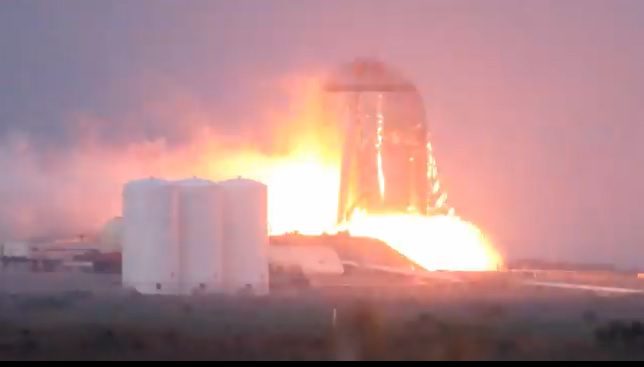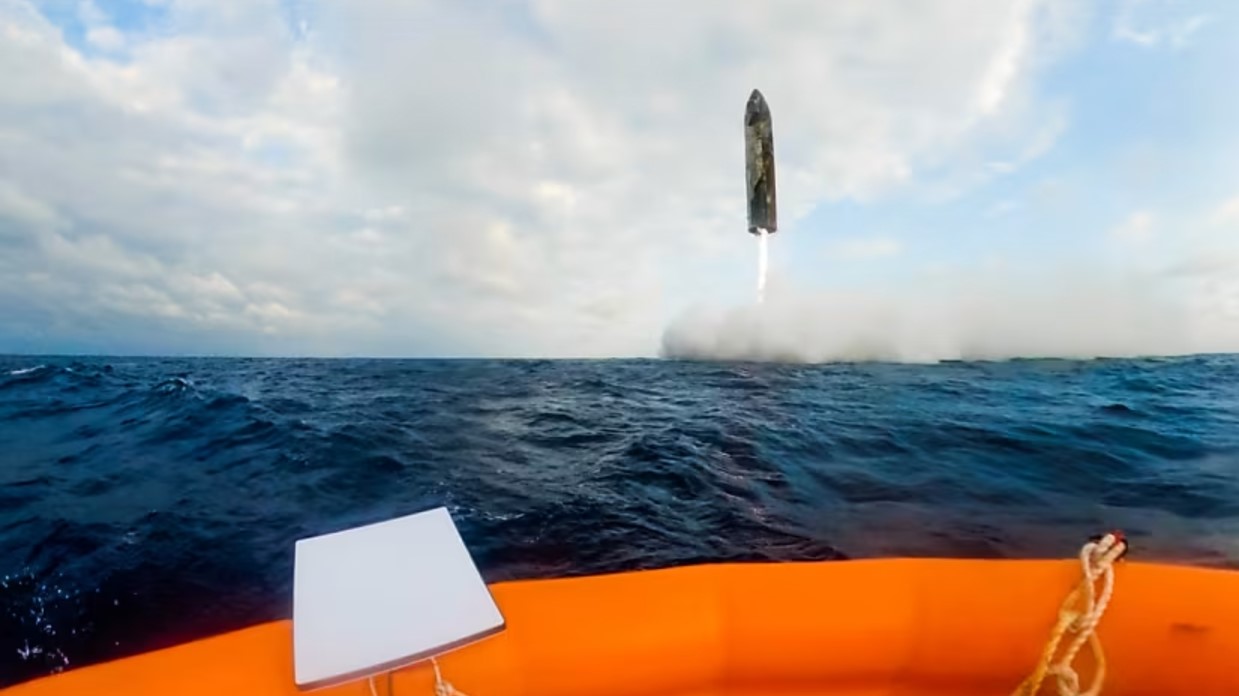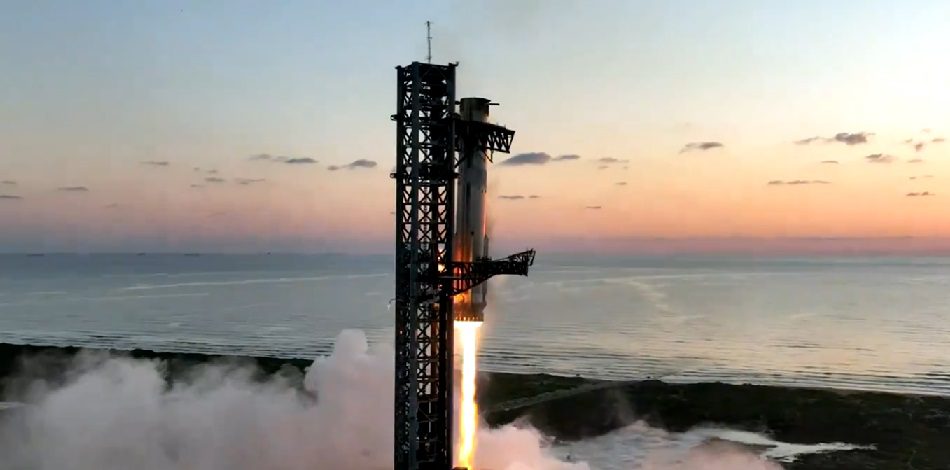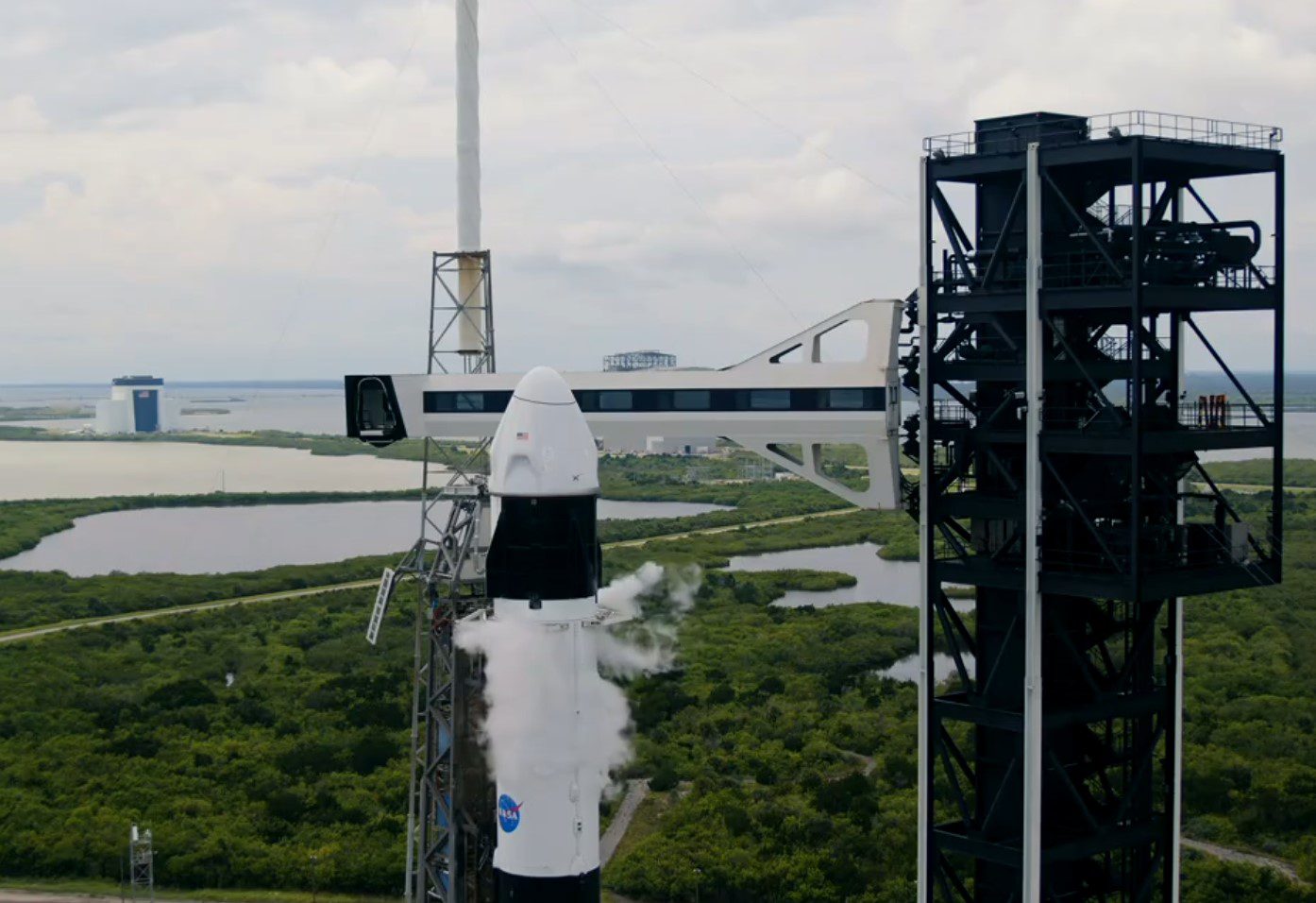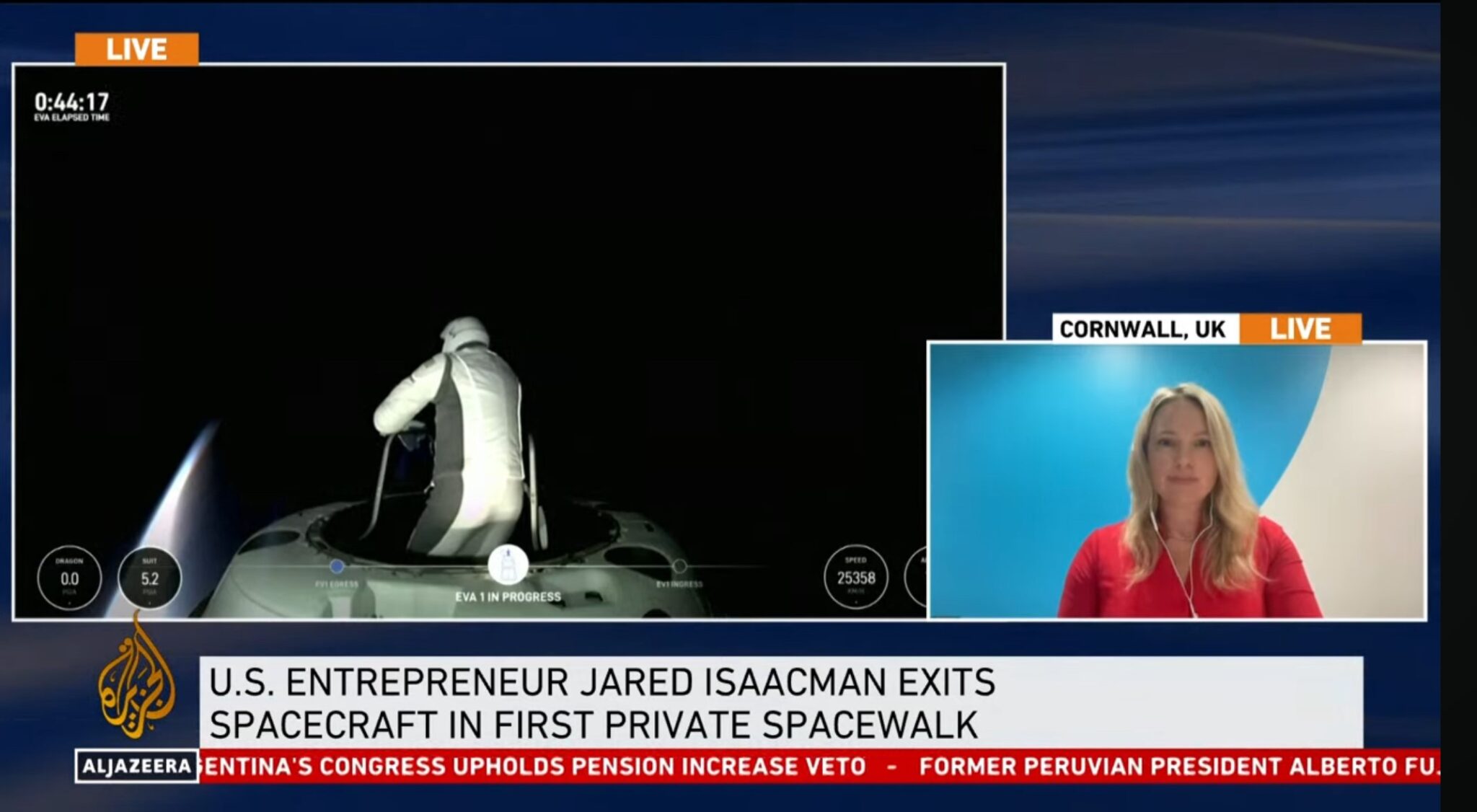While it might be sans its “pointy” nose cone after it fell off and was damaged in windy weather, the Starhopper test rocket has nevertheless begun to make static firings and short tethered hops at its Boca Chica test site in Texas. This was announced SpaceX founder and Chief Designer Elon Musk via Twitter. The rocket is built from stainless steel and acts as the technology test forerunner to the main Starship/Superbooster (formerly known as BFS/BFR) combination.
Choosing stainless steel combined with transpiration cooling has allowed SpaceX to eschew using heavy conventional thermal protection tiles (either ceramic or pica ablative based or combination thereof) for the full sized Starship except for the windward re-entry side of the craft. Nevertheless, the move was a surprise given that SpaceX itself previously hailed its own success in producing very large very light composite tanks – even though these were very expensive to build and had suffered some testing failures. As it was, it had been mooted that the Superbooster itself might still have used composite tankage.
However, Musk has further confirmed via Twitter that the main Superbooster rocket element will also use stainless steel as its main structural and skin material, thus helpfully making it able to re-enter from suborbital flight at Mach 8-9 without any extra thermal protection. Using stainless steel also avoids the problems of composite tanks’ infamously unpredictable failure/delamination mechanisms.
Teslerati.com has reported that SpaceX has now destroyed most of its large scale composite tank tooling.
Comment by David Todd: While using composites as metal tank strengtheners has merit, this writer has long been a detractor of composite-only tanks. The original attempt to use them on the failed X-33 single-stage-to-orbit demonstrator project showed that they were both difficult to make leak proof and that they were prone to unexpected failures. But while Musk may be embarrassed that he has wasted time and a great deal of money (probably tens of millions of dollars) on the expensive cul-de-sac of large scale composite tank technology, it was no reason for SpaceX to destroy its large size composite tank tooling and hardware for there may be other uses for such large lightweight tanks.
Perhaps this was done as a kind of “Scorched Earth” policy to prevent competitors from benefiting from SpaceX’s manufacturing breakthroughs. Alternatively, it may have been done to convince composite-tank aficionados within SpaceX that there was no way back.
Either way, Musk might argue that as an independent private company it owes nothing to anyone and can do what it likes.
So while we applaud Musk’s wisdom in going for the stainless steel route, nevertheless, the destruction of this composite manufacturing technology was an act of technical vandalism akin to the destruction of the Saturn V’s tooling post Apollo, which might actually hinder human space progress in the longer term.

